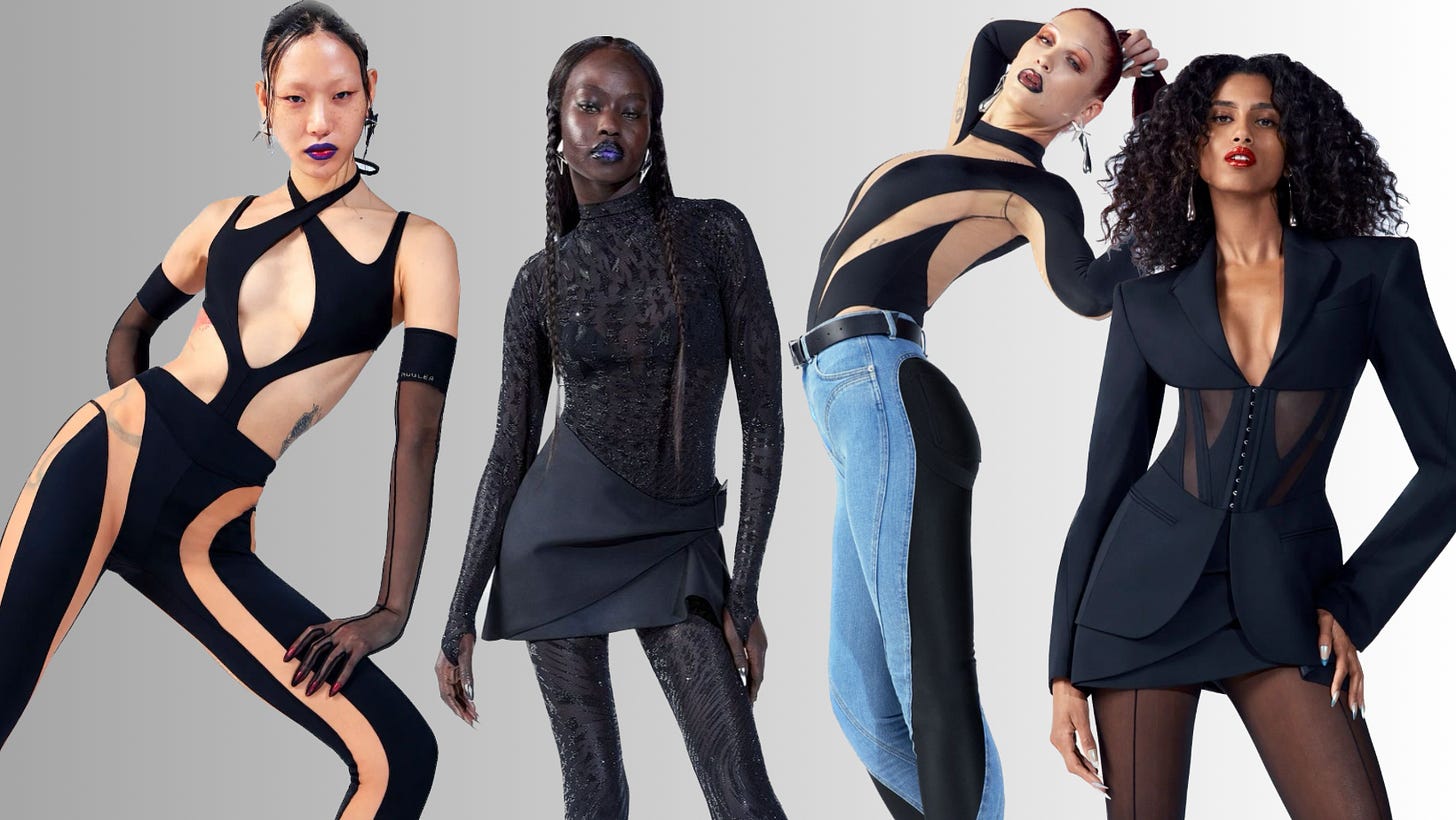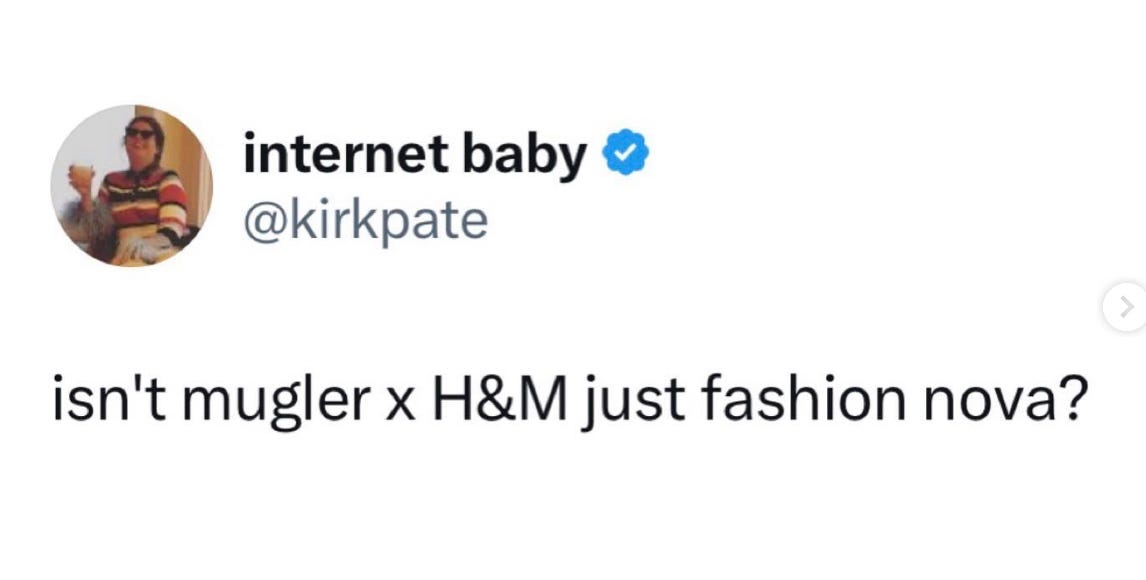Why Is Fashion Duping Itself?
The evolution of the high low fashion game and the rise of dupe culture
Call it what you like. Savvy link-ups, clever collaborations, inspired imitations or just straight-up knockoffs, dupe culture is alive and thriving. And it’s easy to see why. Why spend all of your hard-earned dollars on a $3000 luxury bag, when you can get a convincing dupe for a fraction of the price? Content creators, influencers and de-influencers (yes that's a thing) have granted fashion replicas a whole new glossy lease of life. Enter the era of the dupe.
I should start by saying dupes are nothing new, they’re a tale as old as time. If you’ve had the pleasure of strolling Canal Street in New York then you’ll know what I’m talking about. It’s littered with fake luxury handbags, watches and perfumes, and vendors trying to entice you to buy their attractive-looking wares. It used to be that when buying dupes, we were discreet about it. But now? Well, these days the rules are a little more relaxed and if you’ve bought a dupe, feel free to shout about it.
At the time of writing this, the #dupe hashtag on TikTok has over 4.2 billion views and counting. And across Gen Z’s favourite social media platform, there are endless dupe videos with an overwhelming amount of creators flaunting their latest hauls where they’ve secured the bag, aka found cheaper alternatives of popular items. This seismic shift in attitude makes total sense for a generation that is trend aware, cost-conscious, and who isn’t afraid to humblebrag about their dupe buys.
Dupe culture embraces the fake. There’s no longer the hush-hush mentality surrounding knockoffs, instead, it’s been replaced with a badge of honour as people score themselves bargains. And it’s an area where people aren’t afraid to spill the tea about their best finds. On TikTok, Vivian Tu — also known as @yourrichbff — saw her friend with a $50 woven Amazon bag that looks so much like a Bottega Veneta that she shared it with her 2.4 million followers. The rest is history.
At first, luxury brands were fearful of partnering with fast fashion and high-street retailers in case it damaged their street cred. But now? Now they flock to these partnerships in droves to heighten brand visibility. In 2007, Proenza Schouler took a leap of faith by teaming up with affordable merchandise retailer Target on a collaboration which proved to be a big success. So much so that many items sold out hours after release, leading them to bring back the highly sought-after items in 2019.
We can’t talk about dupe fashion without talking about, you guessed it, H&M and their many, many luxury link-ups that push dupe culture into a whole new dimension. It started in 2004 with a Karl Lagerfeld collection of suiting and little black dresses, and it has since evolved into one of the hottest releases of 2023 so far, in a partnership with Mugler. The collection sold out in minutes. I tried, and failed, to get anything, so hit me up if you want to send me some of the goodies. Joking… kind of.
“We used a lot of the same materials [for the H&M collaboration] and we made them just as well as our own,” said the American-born Mugler designer, Casey Cadwallader, noting that the panelled denim and corsetry from the luxury brand trickled down well from his Paris atelier to a global chain store.
The stigma around dupes is fading and one brand to capitalise on this is Lululemon. Yes, athleisurewear brand Lululemon is getting in on the action. The hashtag #lululemondupe has over 192 million views on TikTok, and the brand recognised this as a chance to engage with their customers on a deeper level. In May they held a dupe swap event at the Century City Mall in LA where people exchanged counterfeit products for a pair of genuine high-rise pants, bringing digital dupe culture to life IRL.
We are trend-led people whether we like to admit it or not. Social media has a part to play in this (doesn’t it always) as we get papped and snapped at dizzying rates, so we flock to dupes that allow us to get a little more bang for our buck while we keeping up with trends. It’s okay for big-name brands to participate in dupe culture, but independent designers that have limited protection against plagiarism will inevitably suffer. But if we keep on buying the dupes, then they’ll keep on coming.
Share this post, feel free to comment, and subscribe to Fashion Tingz to keep the conversation going.






